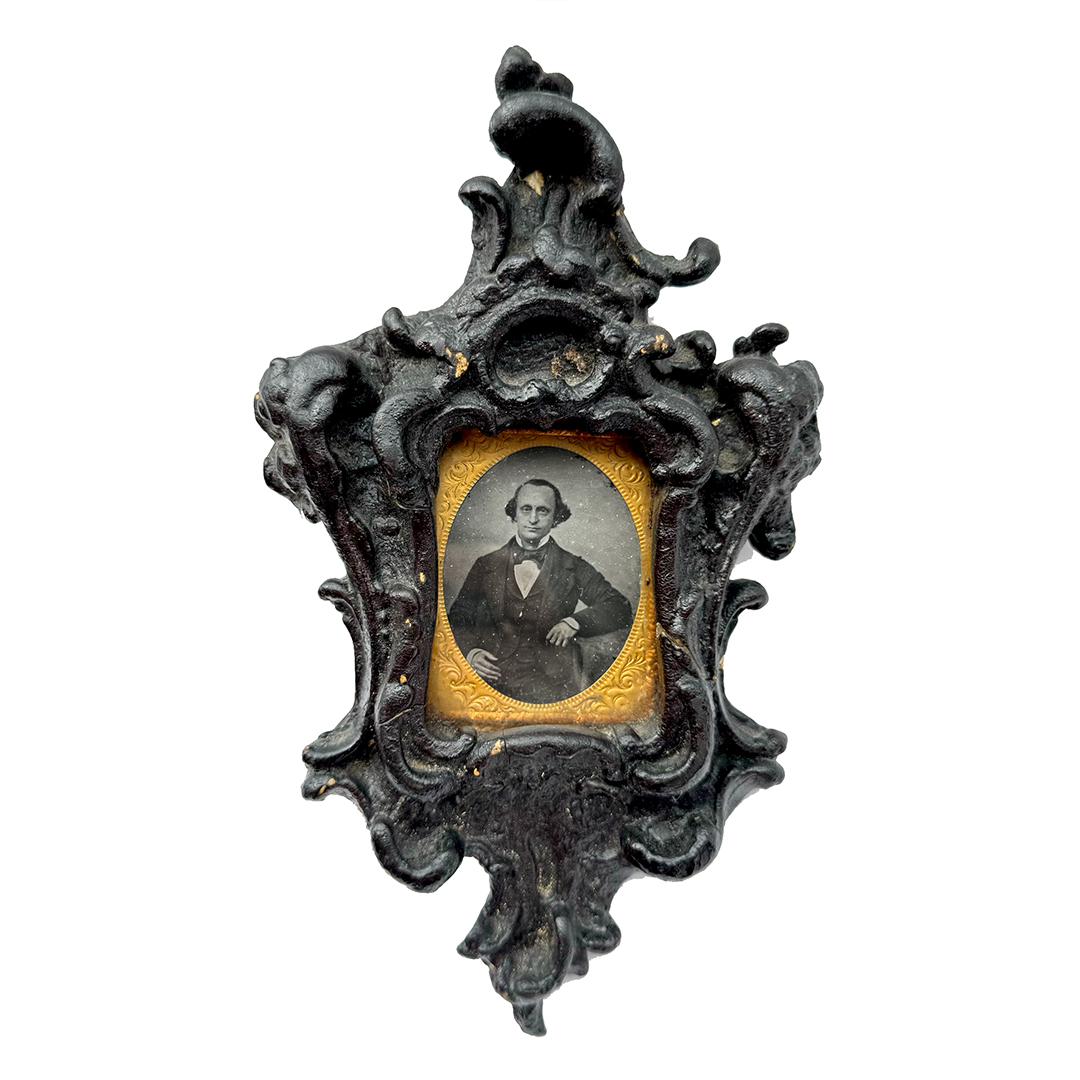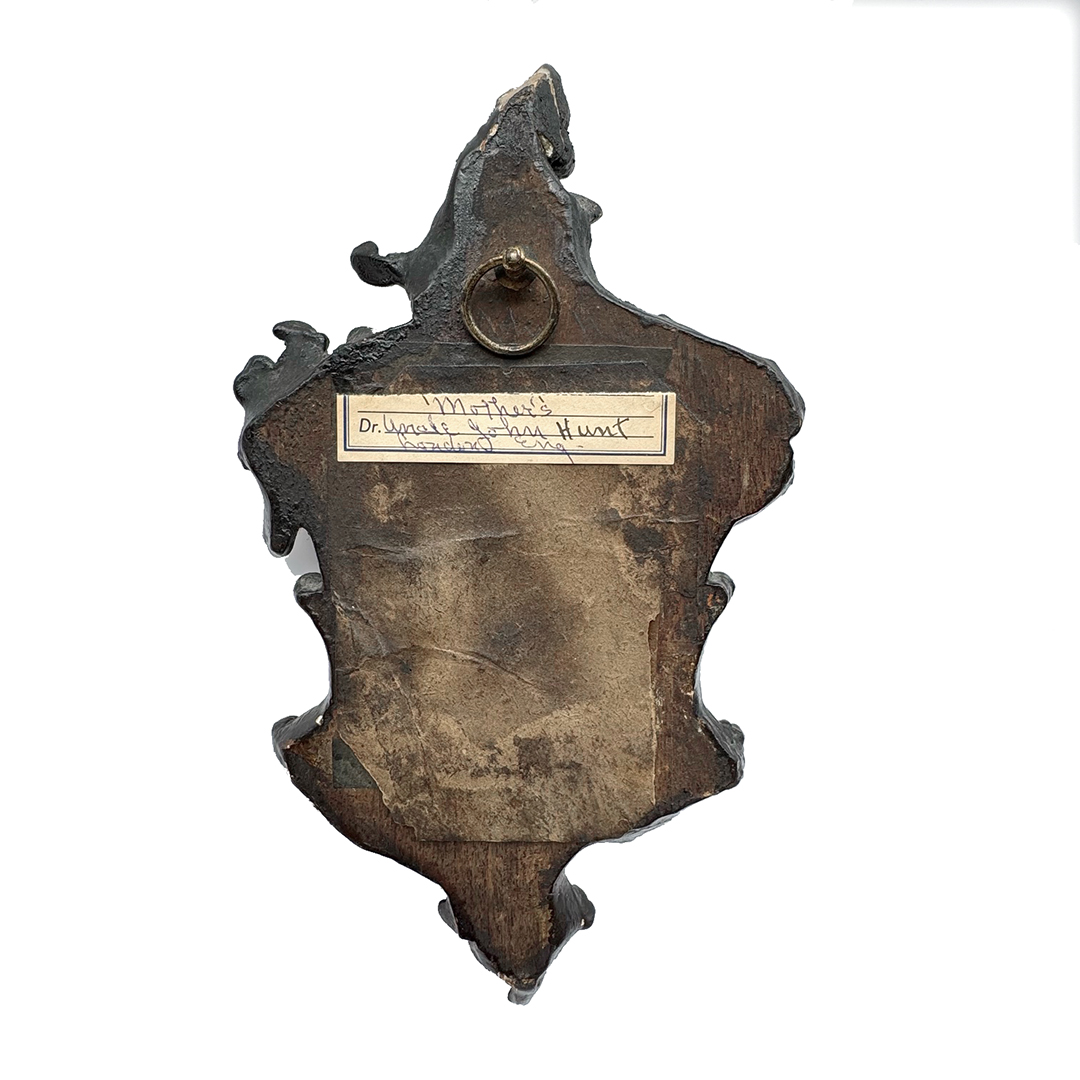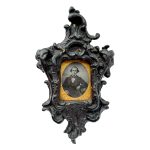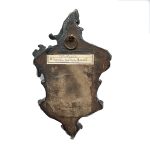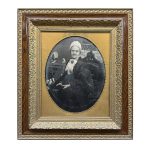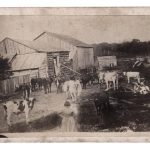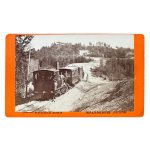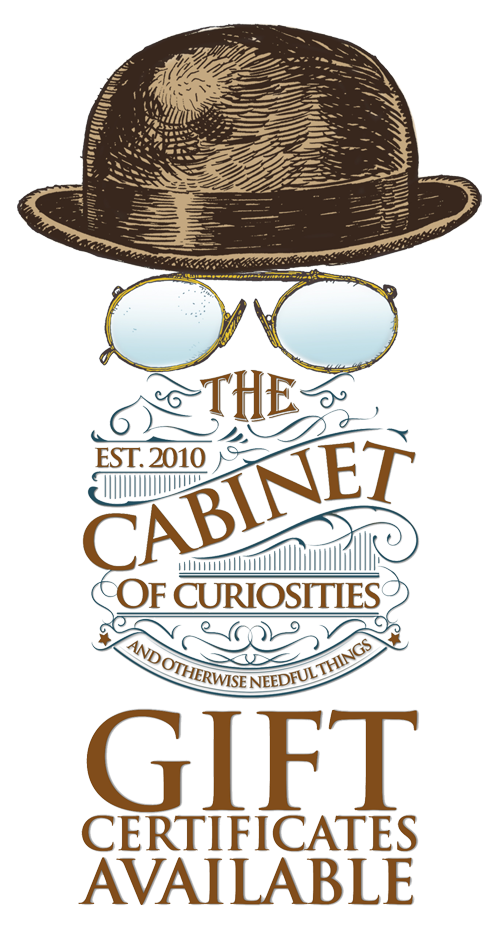Description
A primitive yet also elegant hand moulded frame made of wood and resin or thermoplastic. Houses an early 9th plate ambrotype photographic portrait of a distinguished gentleman. Ambrotype is framed in a very ornate pressed copper mat under glass. On the back is a 20th century label identifying the sitter as ‘Mother’s Uncle John Hunt London England’. There is a repair to the top finial of the frame.
Ambrotypes found today are the actual image literally placed in the hand of the sitter, in some cases well over a hundred years ago. The Ambrotype was first developed in 1851. They were made on a glass plate coated with a wet, light sensitive substance, which when developed and dried, produced a negative image. The negative then had to be mounted against a dark background or coated with a dark varnish to give the illusion of a positive.
The sizes of early photographs including daguerreotypes, ambrotypes and tintypes are determined and referred to by the portion of a full plate. A full plate is 6.5” × 8.5”; a half-plate is 4.25” × 5.5”; a quarter-plate is 3.25” × 4.25”; the most popular 6th plate is 2.75 x 3.25; a ninth-plate is 2” × 2.5”; and the sixteenth-plate is 1.375” × 1.625”.
Frame 8 inches tall

